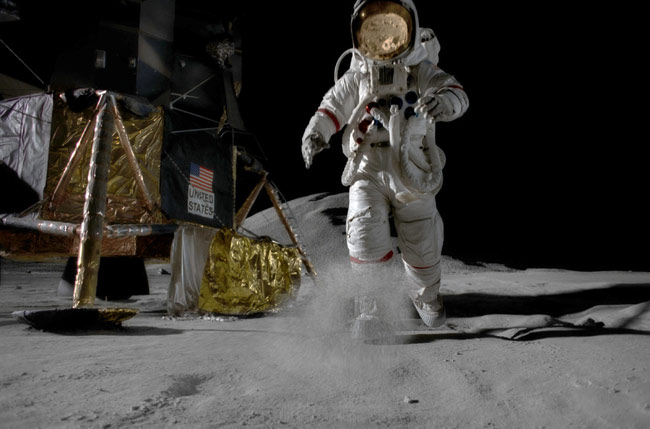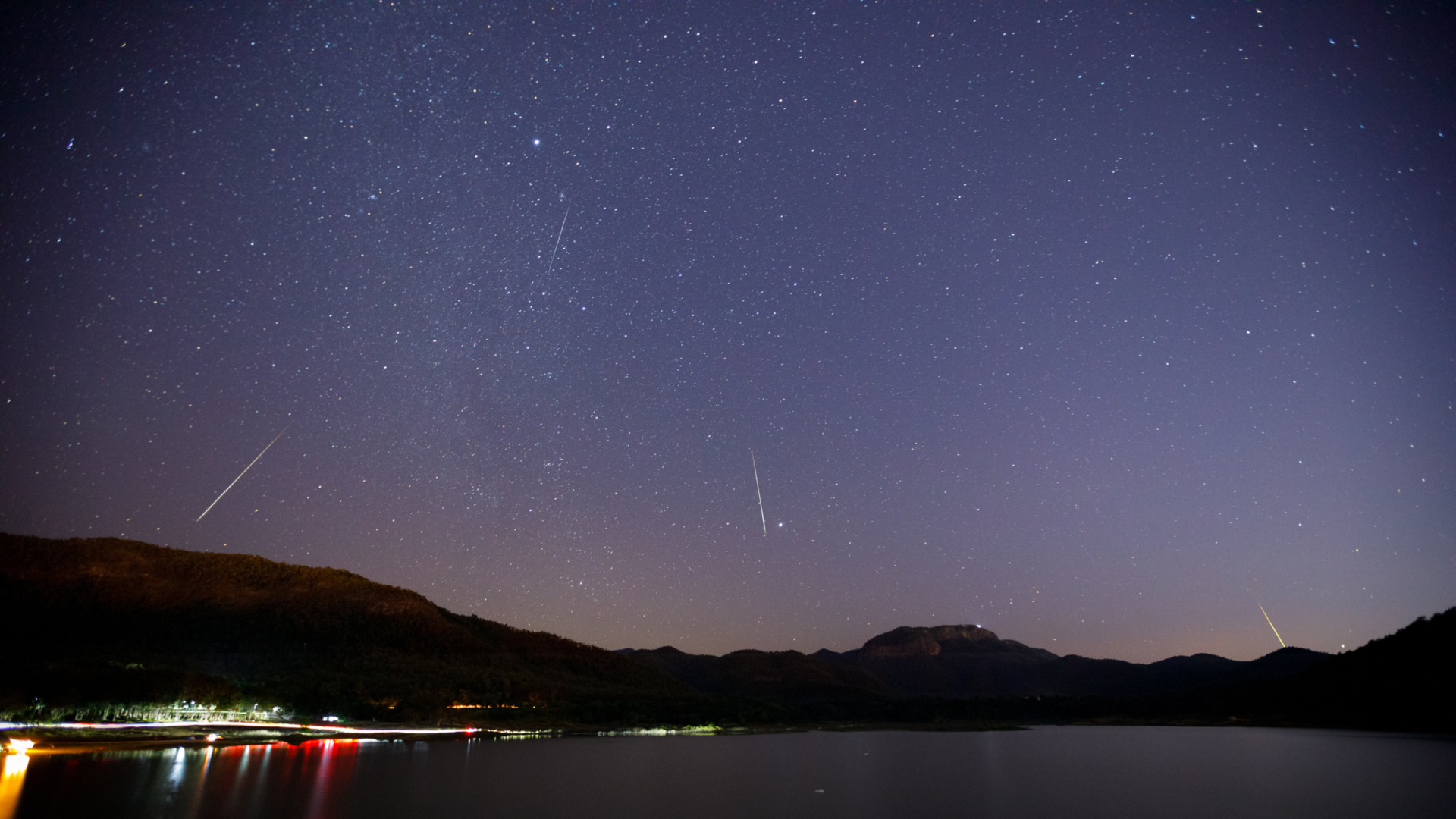'Magnificent Desolation' Brings the Moon Down to Earth

Even withNASA's new planto put humans back on the Moon by 2018, that pale gray disk will likely remainout of reach for most of us stuck here on Earth.
But a new filmhopes to bring the Moon a bit closer.
MagnificentDesolation: Walking on the Moon in 3D is a stunning look at what it must have been like for the12 NASA astronauts who traversed across the lunar surface during the six Apollolandings. Borrowing its title from words spoken by astronaut Edwin "Buzz" Aldrin - the second person to walk on the Moon - the IMAXfilm follows the landings, Moonwalks and thoughts of those few explorers thatmade the trip.
The filmopens in 85 IMAX theaters nationwide, the largest release to date for alarge-format feature.
Narrated byactor Tom Hanks, who served as producer and writer alongside director MarkCowen, Magnificent Desolation fills in the gaps in his other forays intospace, including the HBO mini-series From Earthto the Moon and, of course, Apollo 13.
While it isdisheartening at first to learn that to some children - one girl in particular- the first person to walk on the moon must have been Lance Armstrong, MagnificentDesolation does its best to enlighten young and old viewers alike on thefiner points of NASA's Apollo program.

The filmgladly avoids detailing some of the more widely-known lunar missions - Apollo11's first landing by Aldrin and Neil Armstrong, aswell as Apollo 13's unlucky flight around the Moon without touching down - andoffers a much-needed glimpse into the other flights that cemented NASA's SpaceRace victory over the then Soviet Union during the Cold War.
Breaking space news, the latest updates on rocket launches, skywatching events and more!
While portionsof Magnificent Desolation may drag - in part due to the two-dimensionallimitation of Apollo landing video - the film still compels one to take anothergood, hard look at the Moon.
By a flukeof timing, I missed out on NASA's Apollo program and instead was born into thespace shuttle era in which humans remained locked in low Earth orbit. But MagnificentDesolation's timing is especially apt, considering NASA's announcement thisweek that it will return humans to the Moon by 2018, using Apollo-derivedmethods and modern technology. The message, it seems, is that NASA has done itbefore, and can do it again.
Human spaceexploration can be a very tricky thing. Aside from being outrageously cool,it's also outrageously expensive and risky. But the endeavor is justified byNASA's Apollo astronauts, who lend their own voices to Magnificent Desolationduring archival footage and are voiced by well-known actors (Morgan Freeman,John Travolta and Paul Newman, to name a few) in intricately detailedrecreations. Astronaut recollections are pulled from the Lunar SurfaceJournals, an archive of Moonwalk commentaries compiled by space scholarEric Jones.
Like itspredecessor SpaceStation 3D - an intriguing look not only at the orbital laboratory buthow astronauts live onboard - Magnificent Desolation offers breathtakingviews of humans exploring space.
Thedifference is that, for Space Station 3D, NASA actually sent a 3DIMAX camera into space to chronicle the ISS construction work of 25 astronauts,whereas Magnificent Desolation was created solely on Earth and relied onfaithful sets and computer animation.
One canonly hope that, if NASA meets its 2018 goal, Moon-bound astronauts will carry a3D camera of their own to the lunar surface and bring back their own storiesfor us stuck here on Earth.
Magnificent Desolation: Walking onthe Moon in 3D opens today in 85 IMAX theaters nationwide. (Documentary, 40minutes.)

Tariq is the award-winning Editor-in-Chief of Space.com and joined the team in 2001. He covers human spaceflight, as well as skywatching and entertainment. He became Space.com's Editor-in-Chief in 2019. Before joining Space.com, Tariq was a staff reporter for The Los Angeles Times covering education and city beats in La Habra, Fullerton and Huntington Beach. He's a recipient of the 2022 Harry Kolcum Award for excellence in space reporting and the 2025 Space Pioneer Award from the National Space Society. He is an Eagle Scout and Space Camp alum with journalism degrees from the USC and NYU. You can find Tariq at Space.com and as the co-host to the This Week In Space podcast on the TWiT network. To see his latest project, you can follow Tariq on Twitter @tariqjmalik.
